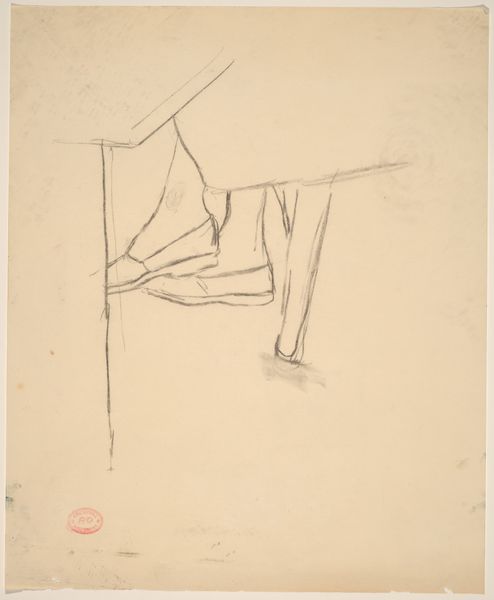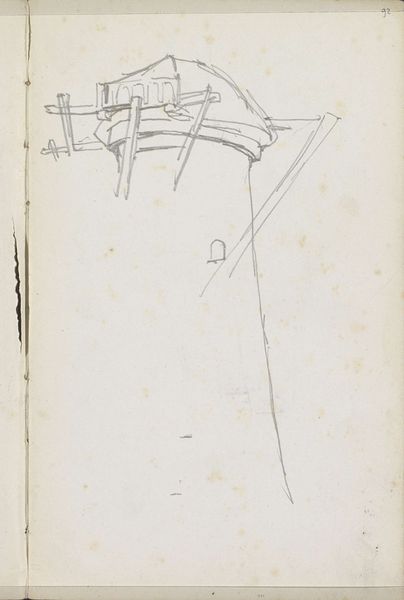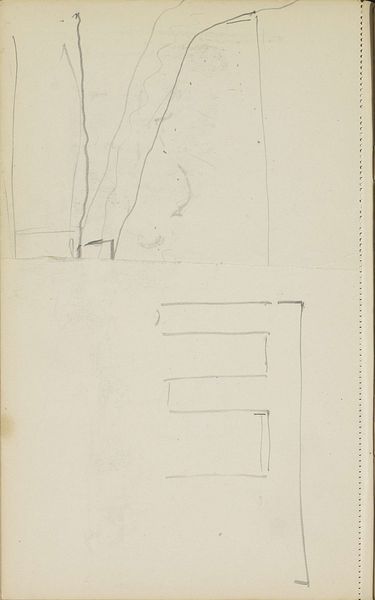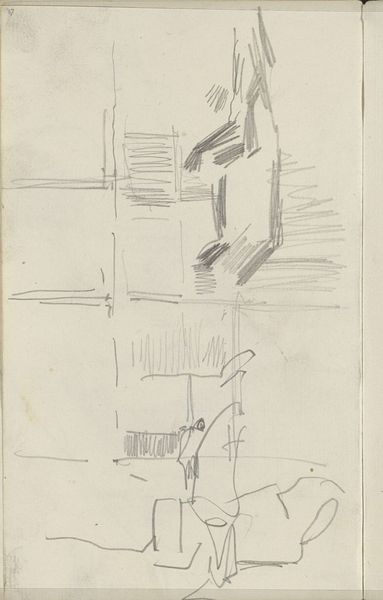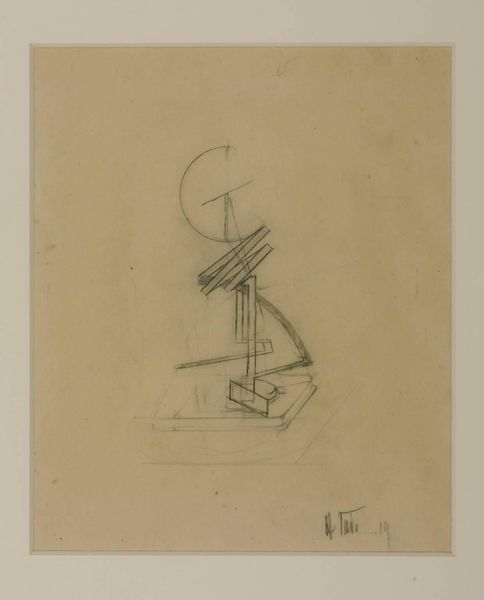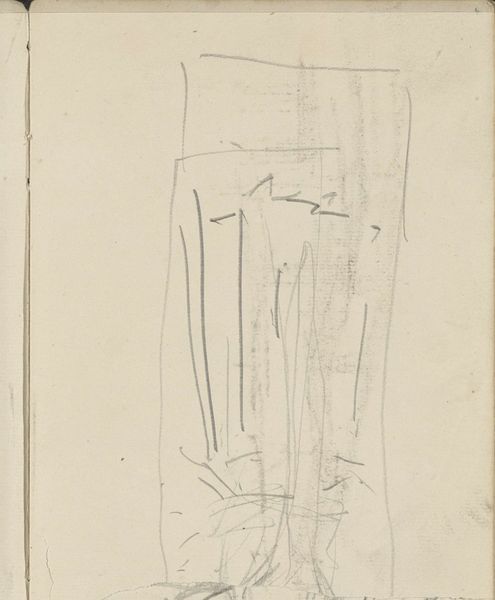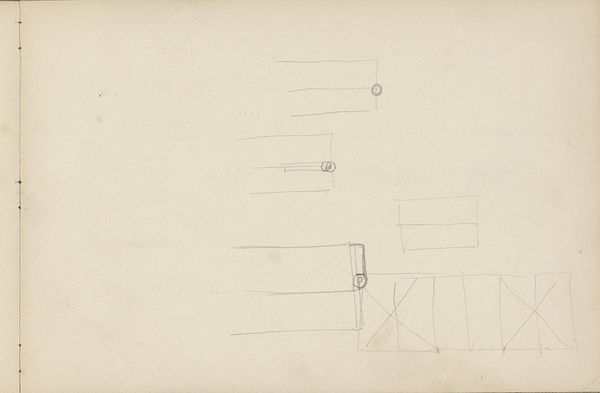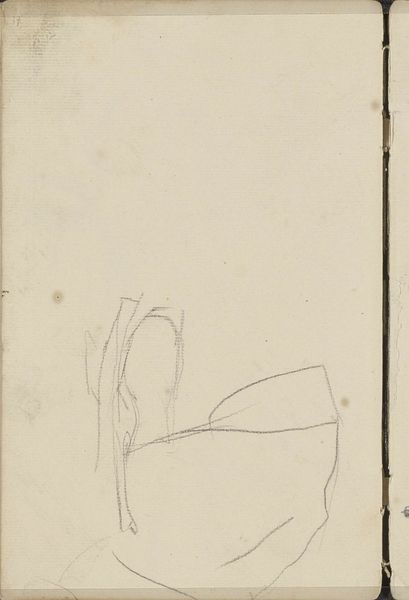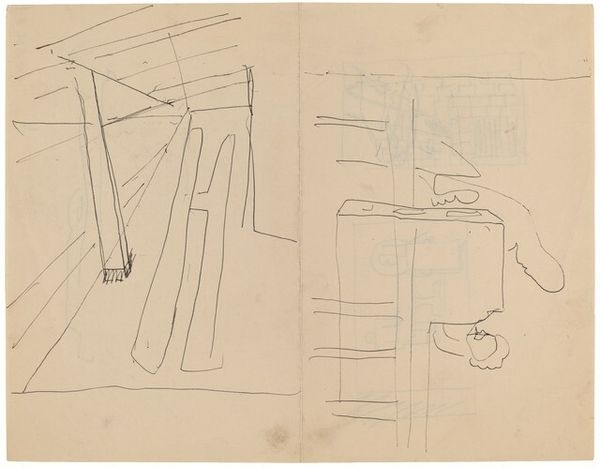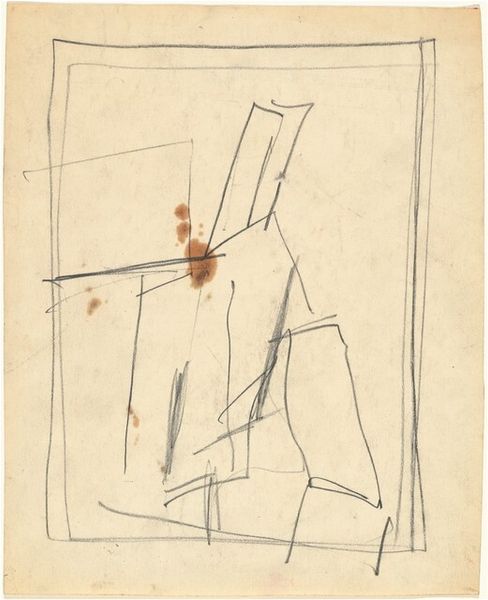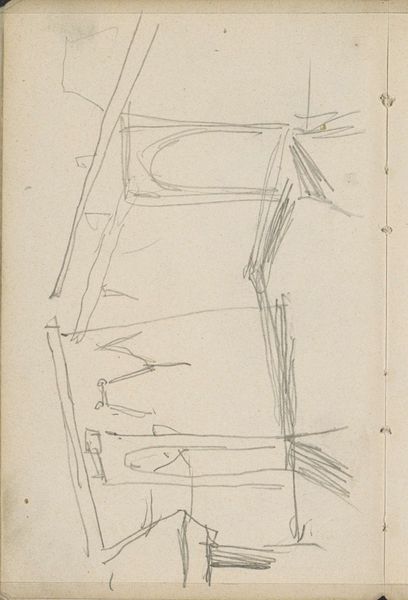
drawing, pencil
#
drawing
#
etching
#
geometric
#
pencil
#
abstraction
#
line
Dimensions: overall: 21.6 x 27.9 cm (8 1/2 x 11 in.)
Copyright: National Gallery of Art: CC0 1.0
Curator: Here we have a pencil drawing by Mark Rothko, simply titled "Abstraction". Editor: It has a stark quality. The contrast between the stark geometric lines and the sweeping curves feels unfinished, almost volatile, like a moment caught in suspension. Curator: Rothko's art consistently wrestled with capturing pure emotion. What you see as unfinished, I believe he perceived as unfiltered expression. Consider the date, if it could be definitively placed— what social or political undercurrents might have fueled its creation? Was it a response to a societal constraint, a visual manifestation of repressed voices? Editor: Perhaps. But also note the interplay between these seemingly disparate shapes. The hard lines are anchoring the piece while the lighter, freer strokes are soaring above, pushing against the frame. This, to me, establishes an order, almost a compositional harmony. Curator: Order yes, but I would argue an imposed order that barely contains an undercurrent of the other. Editor: Indeed. This contrast elevates the form; even the lack of color underscores the foundational nature of drawing—lines against the surface, a visual tension held in delicate balance. Curator: Let’s think about the medium. Pencil drawings have traditionally been preliminary studies, stepping stones to the greater 'finished' artwork. Are we possibly viewing the germination of a social statement, made manifest in shapes? Did the simplicity afford him the freedom to address a sensitive theme, unrestricted from convention? Editor: Regardless, a study provides great insight into an artist's practice. The economy of line reveals the confidence of vision. Even though rendered in basic materials, and an abstract structure, "Abstraction" is clearly potent. Curator: I'll concur. Rothko's choice to reveal rather than conceal certainly demands a fresh perspective on what exactly we perceive to be, at the foundation, human expression. Editor: Yes, one appreciates the skeletal structure here; it presents abstraction at its most distilled, laying bare its underlying dynamics.
Comments
No comments
Be the first to comment and join the conversation on the ultimate creative platform.
